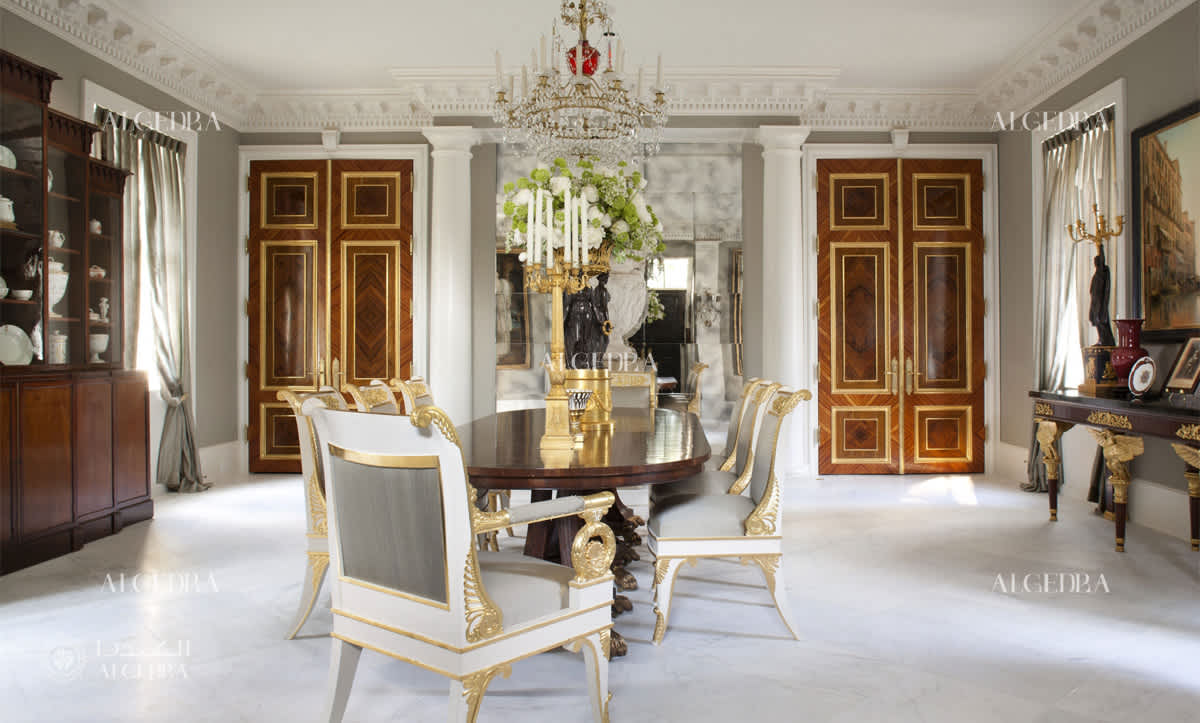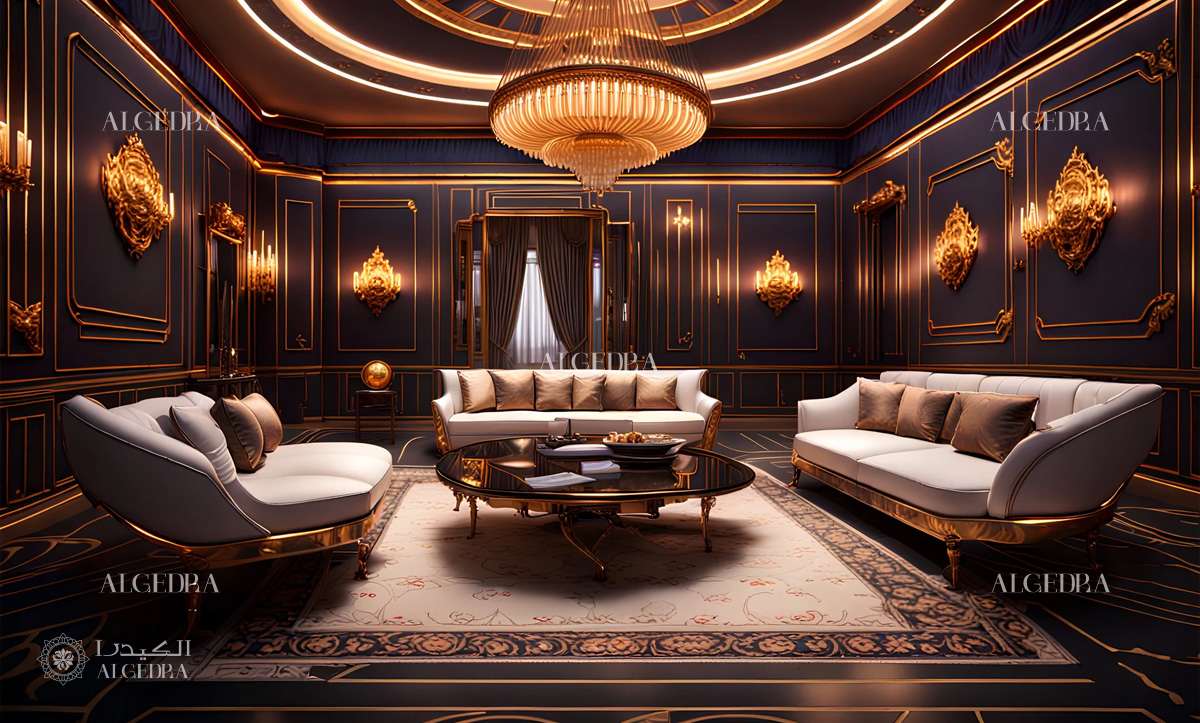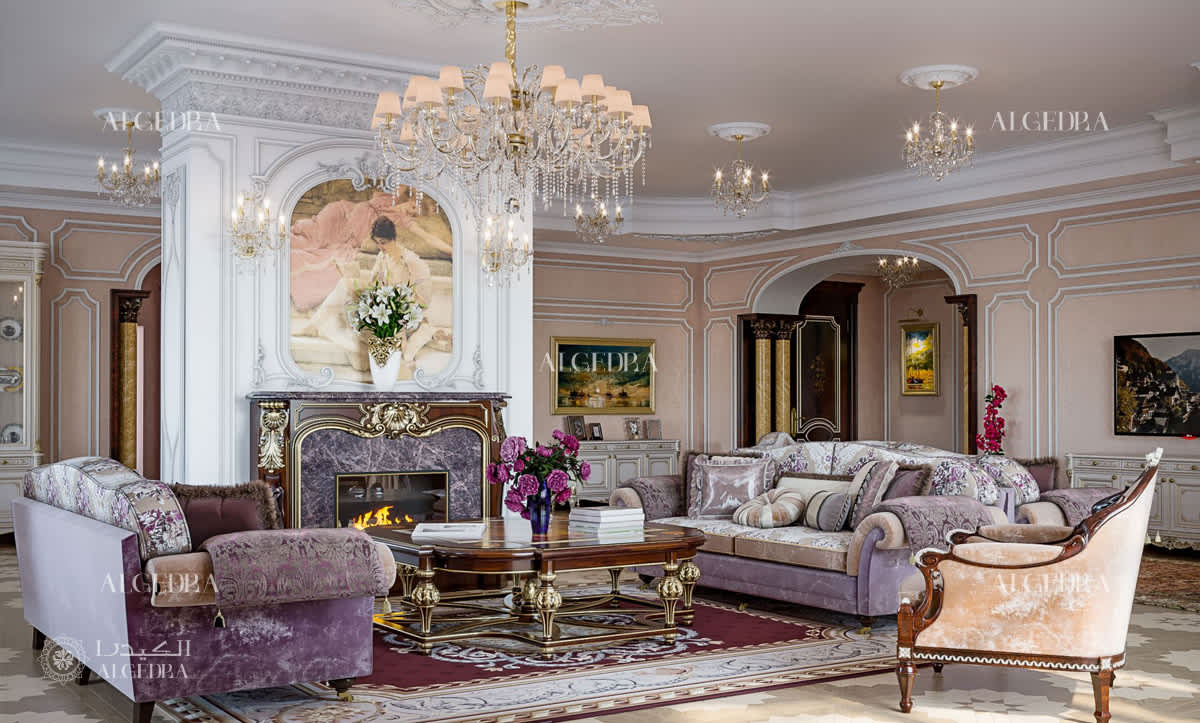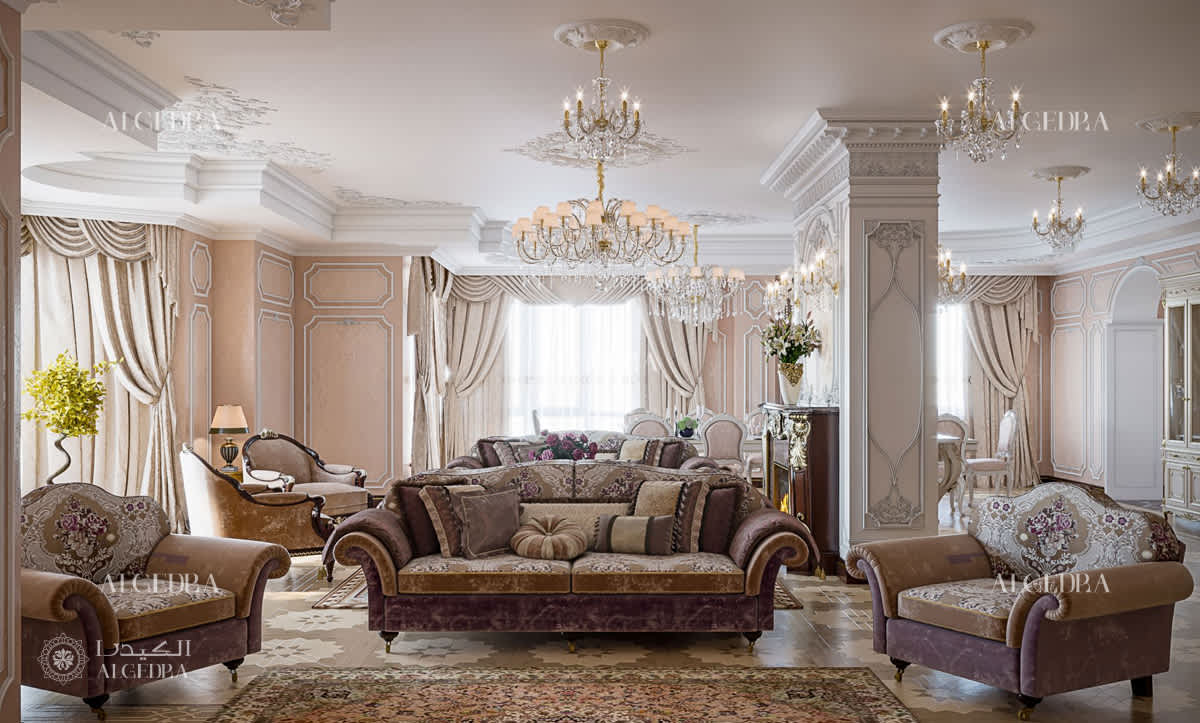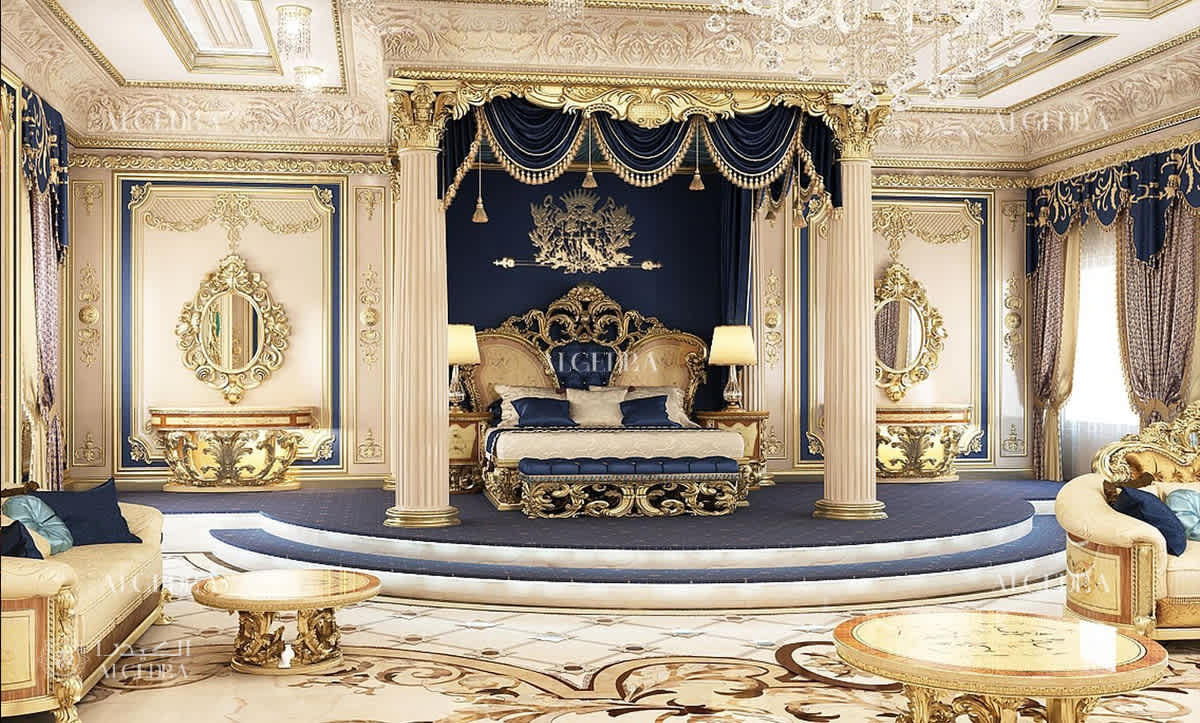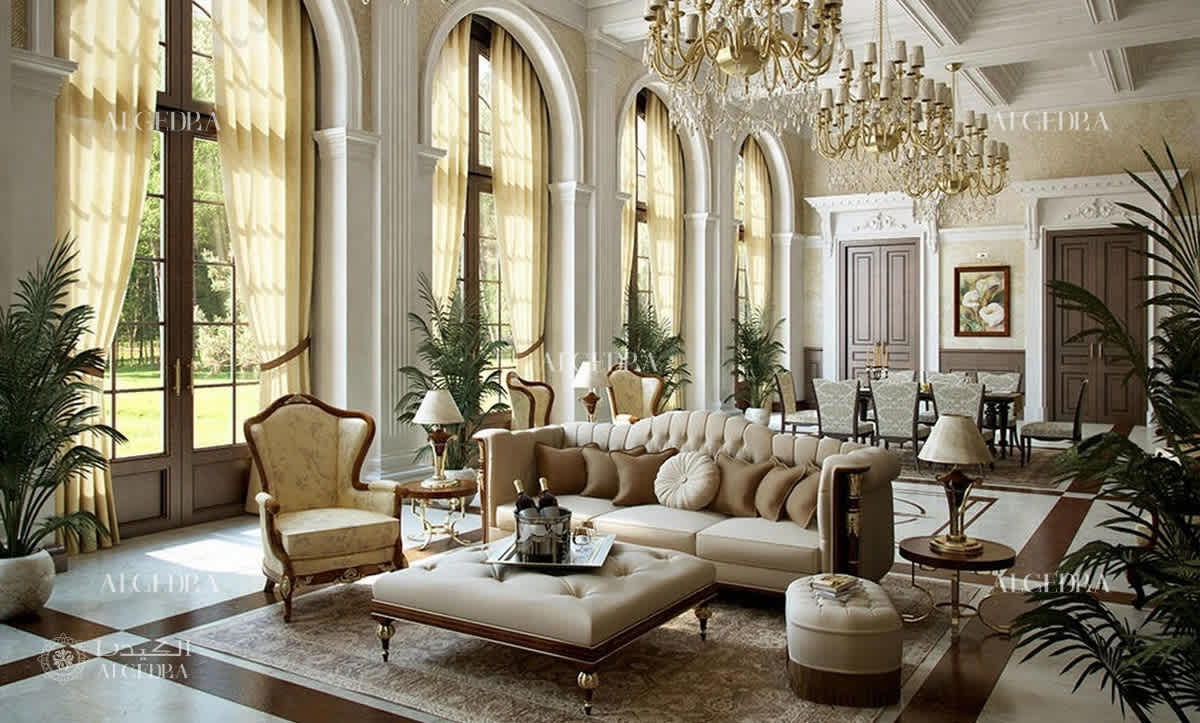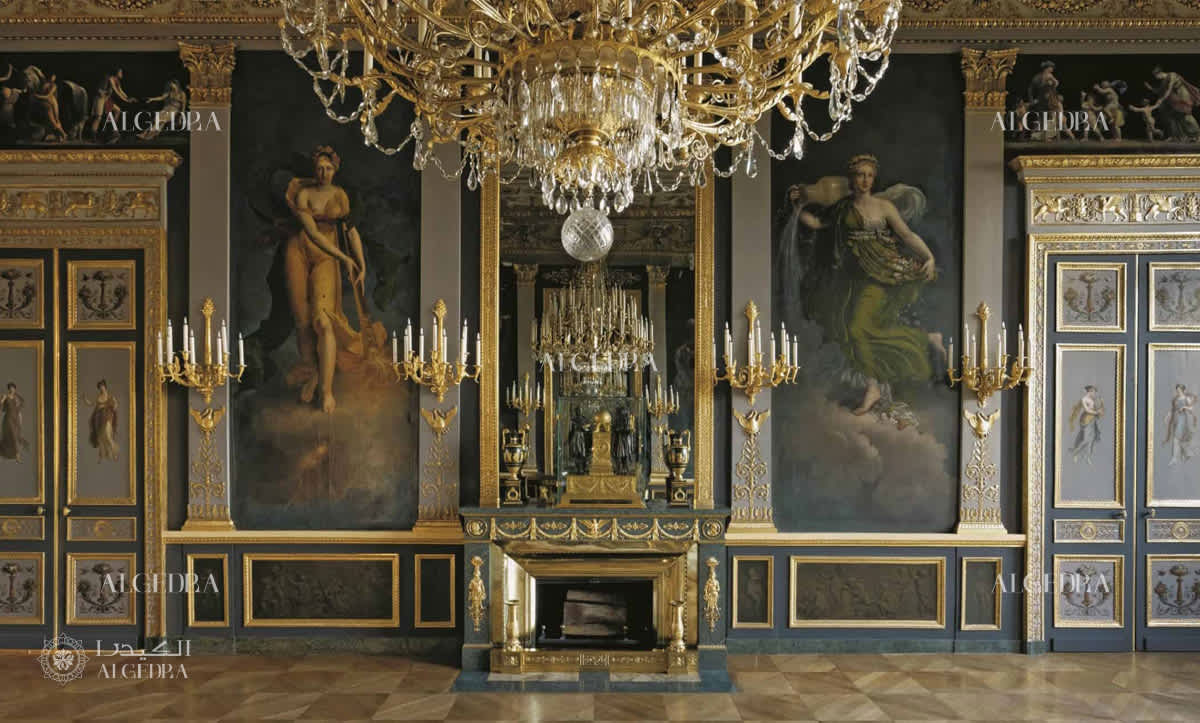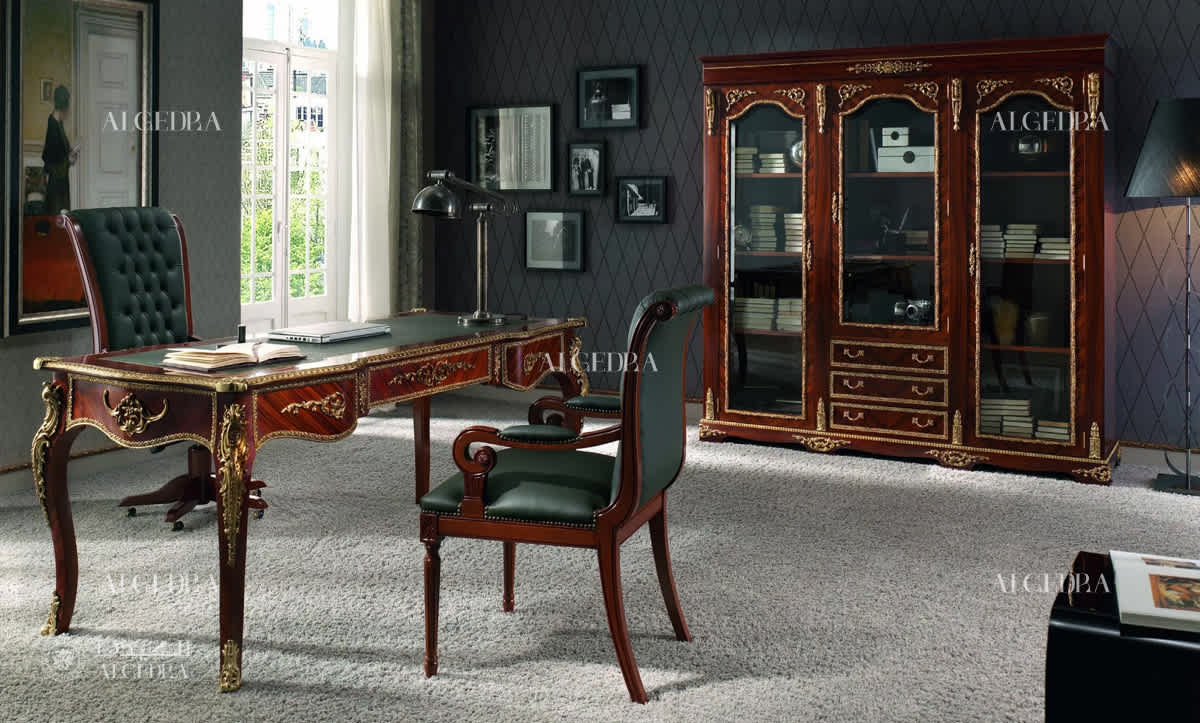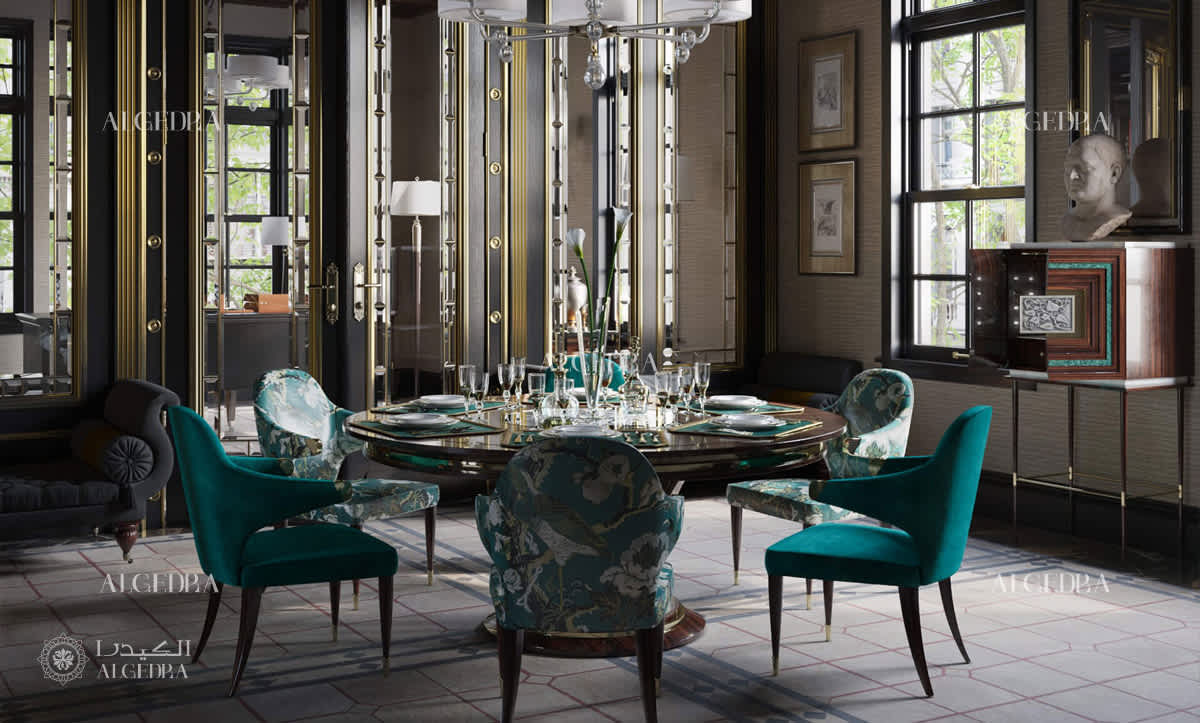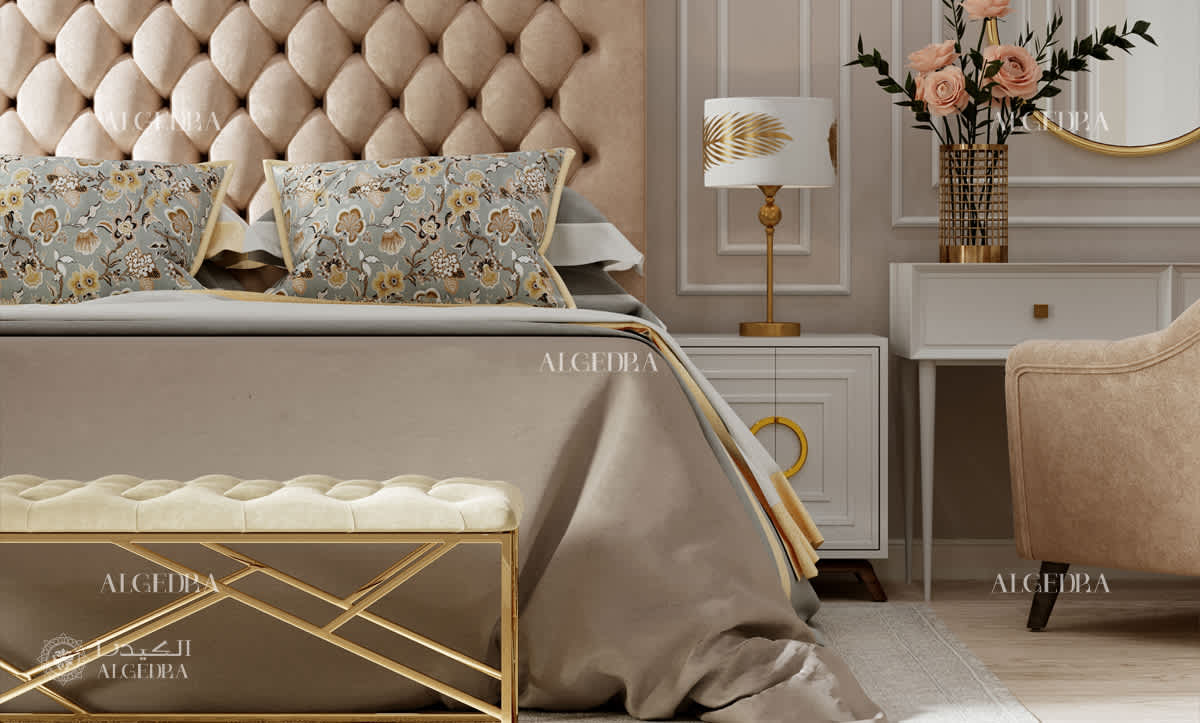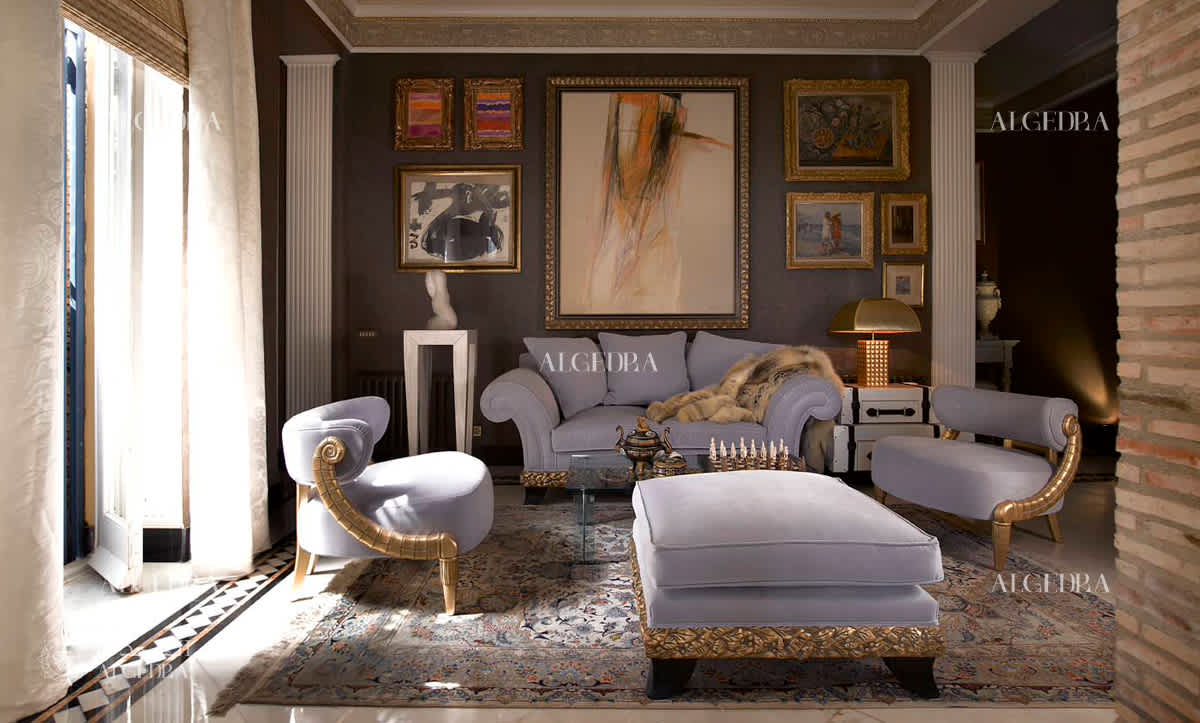Home Page | Blog | Empire Style in Interior Design
Empire Style in Interior Design
6/4/2024
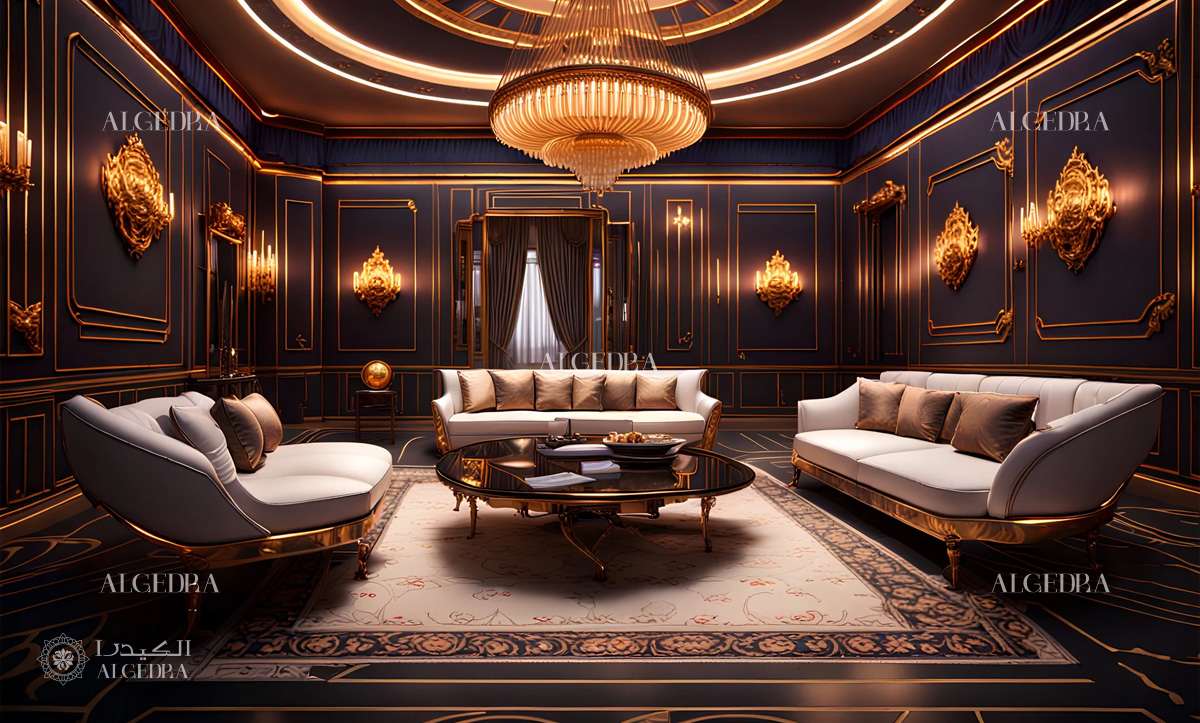
The Empire style emerged during the early 19th century, signifying grandeur and luxury. It began during Napoleon Bonaparte's reign, drawing heavily from ancient Rome and Egypt. This style aimed to project a majestic image of Napoleon's empire.
Characterized by bold, symmetrical forms and opulent materials, the Empire style quickly spread from France to Europe and the United States. The style's use of grandeur and ornate details was a direct reflection of power and prestige.
Empire interiors feature intricate decorations and elaborate furnishings. Common motifs include laurel wreaths, eagles, and sphinxes. Gilded accents, rich fabrics, and dark woods enhance the luxurious atmosphere of these spaces.
1- Historical Background
Napoleon Bonaparte's rise to power and his desire to revive the glory of ancient empires played a significant role in shaping the Empire style. This movement aimed to connect his rule with the grandeur of ancient civilizations.
Classical antiquity greatly influenced Empire design. Architects and designers looked to ancient Roman and Egyptian art and architecture. Columns, pilasters, and motifs like griffins and laurel wreaths became prominent features.
The neoclassical movement, which preceded the Empire style, also contributed to its development. Neoclassicism's emphasis on symmetry and order was carried forward into Empire interiors, but with more elaborate and opulent expressions.
2- Key Characteristics
Empire interiors are known for their luxurious appeal. Rich materials like mahogany, ebony, and other dark woods are commonly used for furniture. Gilt bronze accents add elegance. Upholstery often includes fabrics such as silk, velvet, and brocade.
Symmetry and balance are central principles in Empire design. Furniture and architectural elements are arranged in a harmonious manner, creating a formal atmosphere. Large mirrors with gilded frames enhance space and reflect light, adding to the grandeur.
Decorative motifs are key elements of the Empire style. Symbols like laurel wreaths, eagles, bees, and classical figures convey power and authority. Columns and pilasters often feature intricate carvings and gilded details.
3- Furniture and Furnishings
Empire furniture is robust and imposing. Pieces are typically large and heavy, made from high-quality materials. Chairs, sofas, and tables feature curved lines, scrolled arms, and animal paw feet. Gilded accents and brass or ormolu inlays are common.
Seating furniture is designed for both comfort and elegance. Chairs and sofas are upholstered in luxurious fabrics, with deep, cushioned seats. Silk, velvet, and brocade add opulence. Frames are often made of mahogany or ebony, with gilded accents enhancing their beauty.
Cabinets and storage furniture are equally impressive. Intricate carvings, gilded details, and classical motifs adorn these pieces. They serve both functional and decorative purposes. Empire cabinets and chests of drawers are practical and decorative.
4- Architectural Elements
Empire interiors often feature grand architectural elements. Columns and pilasters are common, flanking doorways and windows. Inspired by classical architecture, these elements typically have decorative carvings and gilded details.
Fireplaces are designed to be focal points. Marble mantels are elaborately decorated with classical motifs and gilded accents. Large mirrors above fireplaces enhance space and light.
High ceilings in Empire interiors may feature decorative plasterwork or frescoes. Chandeliers made of crystal or bronze add elegance and sophistication. The overall effect is one of grandeur and luxury.
5- Colors and Textures
The color palette in Empire interiors is rich and luxurious. Deep, saturated colors like red, green, and gold are commonly used. These colors are balanced with neutral tones like cream, beige, and black. Rich fabrics and materials add texture and depth.
Gilding is a prominent feature in Empire interiors. Gold leaf is applied to furniture, architectural elements, and decorative objects. The contrast between rich colors and gilded accents adds to the opulence of the space.
Fabrics in Empire interiors are chosen for their richness and texture. Silk, velvet, and brocade are used for upholstery, curtains, and draperies. These fabrics add luxury and warmth to the interior.
6- Lighting and Accessories
Lighting is crucial in creating ambiance in Empire interiors. Chandeliers, sconces, and lamps made of crystal or bronze are commonly used. These fixtures are often elaborate and ornate. Mirrors help to reflect light and enhance brightness.
Accessories are carefully chosen to complement the overall design. Decorative objects like vases, urns, and sculptures often feature classical motifs and are made from high-quality materials like bronze, marble, and porcelain.
Textiles and soft furnishings play an important role. Curtains, draperies, and cushions are made from rich fabrics, often adorned with tassels, fringes, and embroidery. These elements add luxury and comfort.
7- Use in Modern Design
While the original Empire style belongs to the early 19th century, its influence continues in modern interior design. Contemporary interpretations incorporate key elements while adapting them for modern tastes and lifestyles.
Modern Empire interiors may feature cleaner lines and restrained decoration. Symmetry and balance remain important, but the overall look is more streamlined. High-quality materials and rich textures are still essential.
Furniture in modern Empire interiors combines classical shapes with contemporary finishes. Traditional pieces may be reinterpreted with modern upholstery. Gilded accents and classical motifs are used sparingly for understated elegance.
Conclusion
The Empire interior design style is a timeless expression of luxury and grandeur. Originating in the early 19th century, it draws from classical antiquity and Napoleon Bonaparte's ambitions. With its focus on symmetry, rich materials, and elaborate decoration, Empire interiors create an atmosphere of power and prestige.
Whether in its original form or modern interpretations, the Empire style continues to inspire.
For those seeking a luxurious and elegant interior, the Empire style offers a timeless solution. Its influence is seen in both historical and contemporary settings, making it a versatile design choice.
Choosing an interior design company in Dubai that understands the nuances of the Empire style can help you achieve a truly stunning and elegant interior.
FREE
CONSUL
TATION
FREE CONSULTATION
TELL US ABOUT YOUR PROJECT
WE WOULD LOVE TO HEAR FROM YOU
Feel free to reach us via this contact form and one of our Design Consultants will get back to you at earliest.
OUR BRANCHES
UAE - DUBAI
+971 52 8111106 | hello@algedra.ae
UK - LONDON
+44 (0) 20 7268 4879 | info@algedra.ae
USA - NEW YORK
+1-212-739-0473 | info@algedra.ae
TURKEY - ISTANBUL
+90 533 701 89 71 | info@algedra.com.tr
Leading Interior Design and Decor Company in Dubai and Abu Dhabi.
Algedra is a reputable, internationally recognized, and one of the most successful interior design companies in Dubai, and Abu Dhabi, which specializes in delivering interior design, architectural, and creative space planning projects throughout GCC, MENA, North Africa, Turkey and Russia.
Algedra is a one-stop solution for all your residential interior design and fit-out needs. We have successfully completed numerous villa interior and exterior design projects, where we integrated quality and originality to deliver interior masterpieces.
ALGEDRA, Interior Design Company in Dubai, is specialized in providing elegant and stunning interior design services for both residential and commercial projects. We turn our clients' dreams into reality, trans- lating their tastes and needs into beautiful and functional spaces.
Since the day we were founded, we have designed and built many branded residences, resorts, hotels, multi-purpose social spaces, and palace designs with different functions and concepts by following the ever-changing design trends over the world.
A key element of our work is a fusion of different cultures and designs, combining Greek, Italian, Eastern and Western influences with British innovation.
As a team of highly qualified interior designers and engineers, Algedra offers complete architectural services from mall design to corporate office design as well as the exterior design of any project based on customers' needs.
Our customers include leading names, we have completed diverse projects in hospitality, landscape, commercial, and residential designs. These projects contain cafes, restaurants, gym, villas, family sitting rooms, bedrooms, kitchens; all showcasing our company's exquisite details and high-end designs.
Residential Interior Design in Dubai
Algedra's interior designers and architects have an important mission: building villas, houses, apartments, condos, and anywhere else where you reside that will fulfill your needs while being structurally safe and sound.
Architectural Designs
There are so many details that go into designing an architectural design project. Every step of the project has been carefully considered for safety and daily comfort by Algedra's experts.
Commercial Design
Conceptualizing spaces for business, to elevate style, and to increase functionality to help enhance the bottom line of a company is vital, as well as employee comfort and interior design too. Our commercial interior designers translate client's concept in ways that are efficient, attractive and provide professional workspaces.
Fit-out Projects
Algedra Interiors delivering high-quality tailored fit-out projects that transform your villas, palaces and commercial spaces.
We're a passionate team of interior designers, architects and engineers. Every day we help clients to solve interior design problems and create engaging spaces!
Wherever you are in Kuwait, Saudi Arabia, Azerbaijan, Qatar, Morocco, Algeria, Tunisia, Libya, Egypt; don't hesitate, contact us to find out more about why we are one of the best interior design companies in Dubai and Abu Dhabi!
